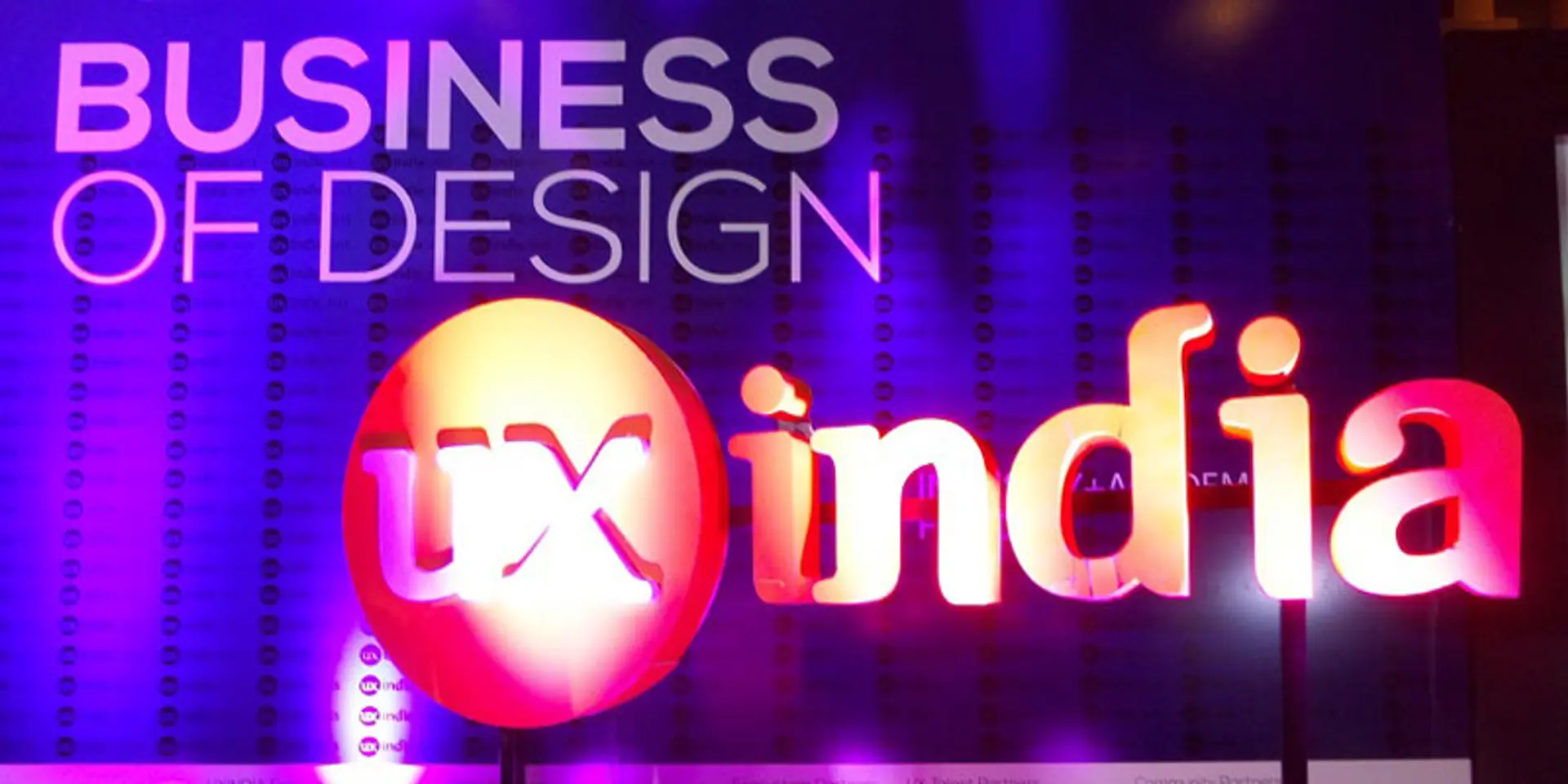‘These are magical times for the design entrepreneur’ – 10 tips from UX India 2015
Three days of inspiration, insights and skills development were offered at the recent UX India 2015 conference in Bangalore, with speakers and experts from India, US, Australia and Germany.
User experience (UX) designers, user researchers, startup founders, academics and tech professionals gathered to discuss a wide range of topics: digital branding, qualitative and quantitative techniques, agile methodology, mobile interaction, customer engagement, industrial design, and women in design.
See also my coverage of the UX India 2014 conference and Singapore Design Week 2015, and my article on The ‘8 Is’ of design thinking for startups. Here are my key takeaways and tips from Day Three of the conference; other insights were offered at the previous two days of workshops.
1. Ride India’s digital boom
India is leapfrogging many stages of ICT access and business sector development thanks to the mobile, Internet and IoT boom. Nigeria and India are the top two countries in the world in terms of Internet traffic coming from mobiles, and India and China are the top two countries in terms of e-commerce volumes via mobile, observed Samir Chabukswar, CEO of Yuj Designs.
The distinction between digital and physical worlds is blurring, and designers are now needed in all sizes of organisations: startups, SMEs and industrial giants. It is key for designers to understand the consumer’s ‘moment of intent’ (MOI) within the broader digital ecosystem, said Chabukswar. He identified a range of emerging design trends, in the form of Twitter hashtags (reflecting interest in the online community as well): #LifeResearch, #EcosystemDesign, #DesignInTheBoardroom, #FutureProductsDefinition and #FutureOfDesign.
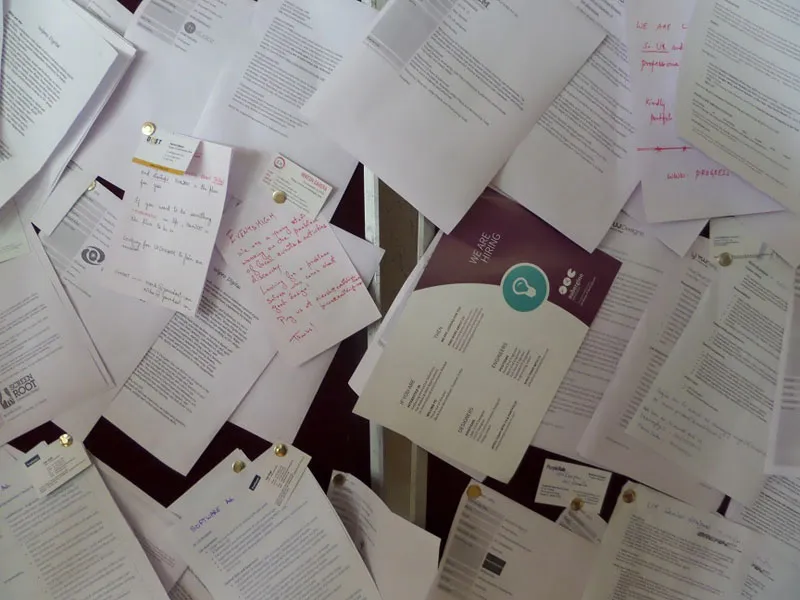
UX experts are now becoming not just contributors to product development but collaborators and co-discoverers as well. They need to master data-intensive research skills and pick up generalist skills in addition to specialisation, urged Chabukswar.
2. Without good design, Digital India will fail
From the smallest startup to the largest government initiative, UX is an important success factor for the digital environment. “Where is design in the government’s grand Digital India initiative?” questioned Bapu Kaladhar, UX Strategist and founder of the UX India conference. It is good UX which ultimately drives long-lasting change and impact, and not just high-profile announcements of top-down digital initiatives. Digital and physical design issues need to be blended together for a better citizen experience.
Free WiFi in India’s train stations sounds nice, but how about hygienic eating spaces and clean toilets? Smart cities sound impressive, but how about pothole-free roads and reliable water supply? Much attention has focused on the UX contribution to profits, but attention should also be paid to UX initiatives of social entrepreneurs and NGOs working to bring digital dividends to India’s under-privileged.
3. Focus on problems and pain points
Too many companies are chasing ‘the perfect solution for a non-existing problem.’ “You cannot solve what you do not understand,” cautioned Adam Egger, UX Director at Software AG. Understand users, describe their pain points, test prototypes and only then develop solutions, he advised. “Describing customer pain points is the door opener to user centricity,” Egger said.
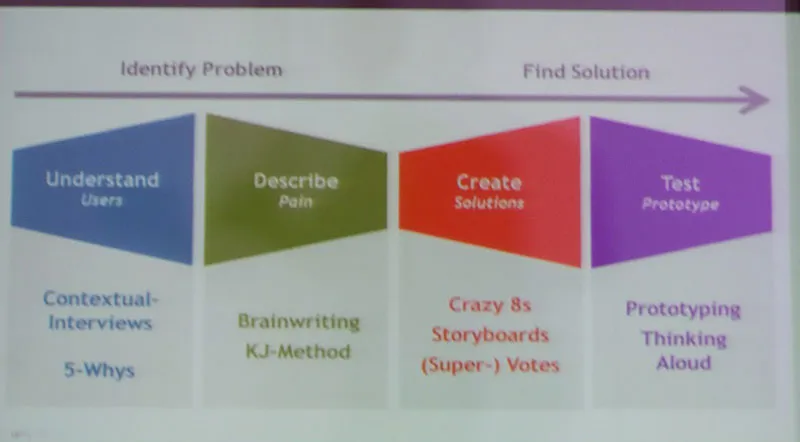
He described a range of simple but effective tools in this regard: brainwriting instead of brainstorming; PoP (prototyping on paper); user environment immersion; and multi-stakeholder collaboration. His company implements practices such as requiring all employees to watch users for at least two hours every six weeks.
4. Agile design
There are too many cases of product or service implementation before full understanding of a problem. Agile methods need to be deployed more proactively in UX, advised Steve Fadden, Lead User Researcher at SalesForce.com.

Frequent and regular communication between team players and customers helps unearth new insights. For instance, many people may not correctly spot the dalmation in the figure above (‘What do you see?’), but talking to others may literally help spot and connect the dots, joked Fadden.
Team collaboration and reflection helps understand the user context, develop empathy and spot knowledge gaps. Tools such as the Fishbone diagram, card sorting, customer storytelling and triangulation can be used, along with activities such as JAD (Joint Application Design) and GOOB (Get Out Of the Building)! “Stories create lasting feelings,” said Fadden, citing the work of experts such as Nancy Duarte and Jennifer Acker.
5. Industry-academia collaboration: research and projects
A highly-engaging panel featured insights from N. Murli, Principal, Academic Innovation and Design, Manipal Global Education Services; Chandni Rajendran, UX architect, IDC; Saleem Ahmed, Centre for Product Design and Manufacturing, IISc; Priyanka Agrawal, Digital Strategist, Fractalink Design Studio; Utkarsha Malkar, Asst. Prof., MIT Institute of Design; Kshitiz Anand, India Studio Director of L'école de Design; and Atul Manohar, India Director of UX, Informatica.
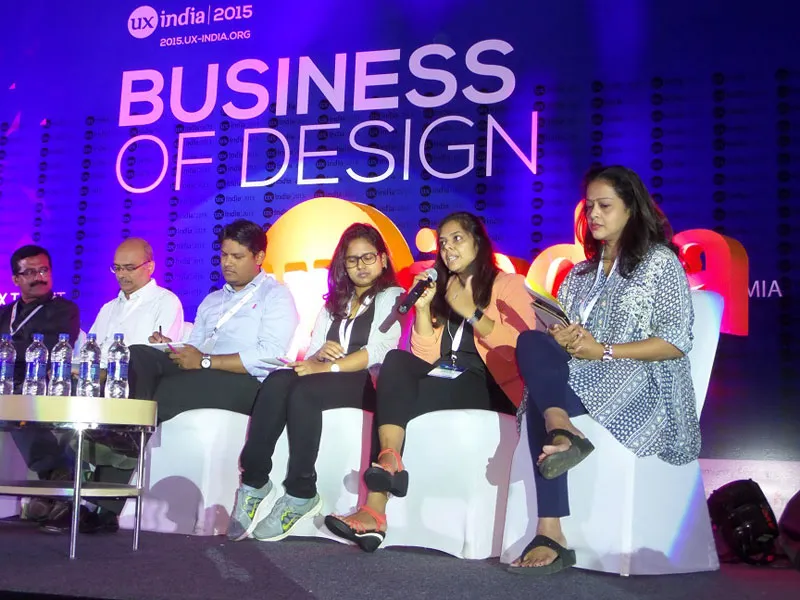
There is an understandable gap between industry and academia in UX, and between UX education in India and the West - but they can be bridged through joint execution of projects and collaborative research. Design thinking should be augmented with ‘design talking’ and ‘design doing,’ and the culture of complaint needs to be replaced with a culture of contribution.
Academia may be able to graduate good design leaders, but Indian industry needs to engage them effectively as well. Design approaches need to be taught to everyone – engineers, psychologists and managers alike.
6. Design is about the Big Picture, not just basic skills
Learning about design is not just a one-off academic exercise but a lifelong endeavour. “UX is not just about money and a career but a chance to make the world a little better,” said Bill Albert, Executive Director of the User Experience Centre at Bentley University, and Editor of ‘The Journal of Usability Studies.’
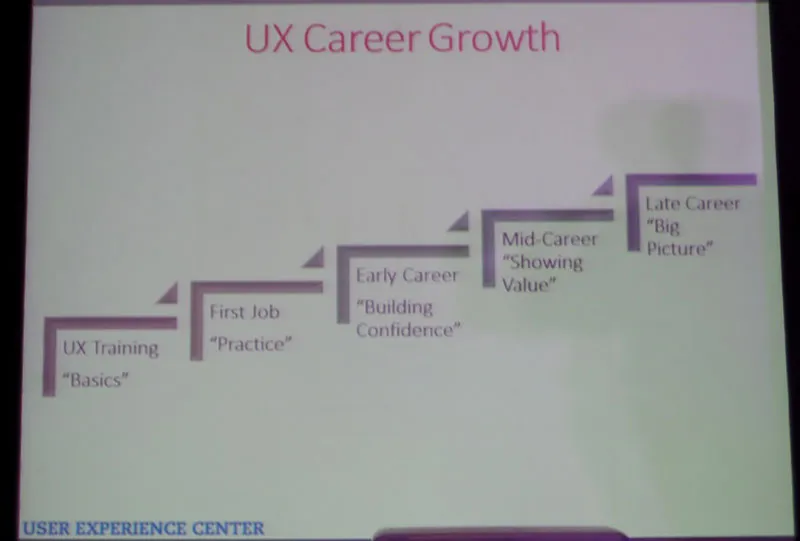
UX success comes from mastery of design, strategy and research. UX practitioners need to improve communication skills even more to evangelise design, share their knowledge through publishing, and find good mentors and sounding boards. “A mentor is your compass,” said Albert.
There are good leadership opportunities all around, and designers should begin by volunteering for small tasks and then taking on bigger projects. They should develop good networking skills and attend not just design events but ‘non-design’ events as well.
7. Be prepared for surprises
No matter how much expertise and experience you have as a UX practitioner, a sense of humility always helps to deepen understanding of user behaviour, said Shane Morris, Client Developer at Automatic Studio. The company has developed a range of award-winning products including cochlear implants for the hearing-impaired.
Implant features such as volume level can be controlled by handheld digital devices which look like mobile phones, and Morris regaled the audience with real-life stories of the many use scenarios he came across – such as kids toying around with the devices to punish one another, or another user who would check to see if the device could detect the sound of his farts.
8. The rise of Big Data and analytics
Big Data and analytics can be used for better insights into design, and to monitor post-launch experiences. “Big Data drives big ideas,” said Balaji T.S., Executive Director for Converged Services and User Experience at Cox Communications.
The company uses a blend of strategies including ‘go broad’ to do wide-ranging research and then ‘go deep’ to drill down into data sets. Its offerings include design inputs for better TV remote controls for the elderly, based on tools such as journey maps. Cross-channel analytics are used to draw insights from what people are saying, how often, with what intensity, and with what recommendations or feedback.
Companies need to go beyond setting up and reporting activities on Big Data to analysis and modeling, Balaji said, citing the work of experts such as Christian Rohrer. Good UX inputs help companies migrate along the full value chain: usefulness -> usability -> delight -> trust -> loyalty.
9. Think India
UX research and practice offers tremendous opportunities for an emerging economy like India, which seems to straddle centuries of developmental evolution. From ancient musical traditions to the latest Silicon Valley trends, a range of cultures are blending together in India today. The UX community really needs to think out of the box to better deliver meaningful and profound experiences for the Indian consumer.
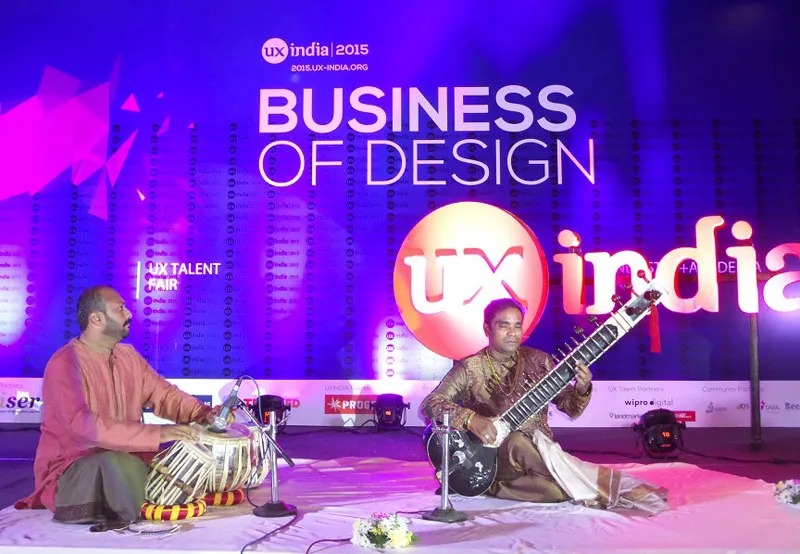
Sounds and live performances can sometimes convey this diversity better than text, and the UX India conference featured a terrific afternoon set of Indian classical music by Pandit Rajkumar on sitar!
10. Rise of the Design Entrepreneur
The success of startups such as Pinterest, Slideshare and AirBnB have shown the power of a design entrepreneur, observed Ranjeet Kumar Tayi, Lead UX Designer, Informatica; their founders were designers.
“These are the most magical times for design entrepreneurs,” said Aditya Bandi, Founder of Bookpad, which was acquired by Yahoo. UX experts know design and technology, and they can acquire business skills to become successful entrepreneurs, or team up with business experts.
“UX practitioners offer a very useful skill for startups: the ability to validate a product among the target users,” observed Ankit Kumar, Founder of Inves. Designers can intuitively develop empathy with customers and sense their pain points, said Kumar, who was earlier with HP, Amazon and CrediBase.
Designers and entrepreneurs should always be open for lifelong learning, unlearning and reinvention, advised Hemant Sahal, Founder of CollPoll. He narrated how he would hang around in different departments right from his college days just to get a sense of different perspectives. “Get out of your comfort zones and try to work in different settings,” he suggested as a creative technique (see also my reviews of the related books Creativity Now by Jurgen Wolff and Reinvent by Josh Linkner.)
Cities like Bangalore have a healthy eco-system for entrepreneurs thanks to its wide range of incubators, accelerators, hackathons and regular founder meetups, said Madan Padaki, Founder of Head Held High Services. UX brings in the key focus and perspective of the customer, which many founders tend to overlook in their eagerness to roll out products and attract investors: UX also brings in a sense of familiarity and even comfort with the notions of ambiguity, uncertainty and chaos.
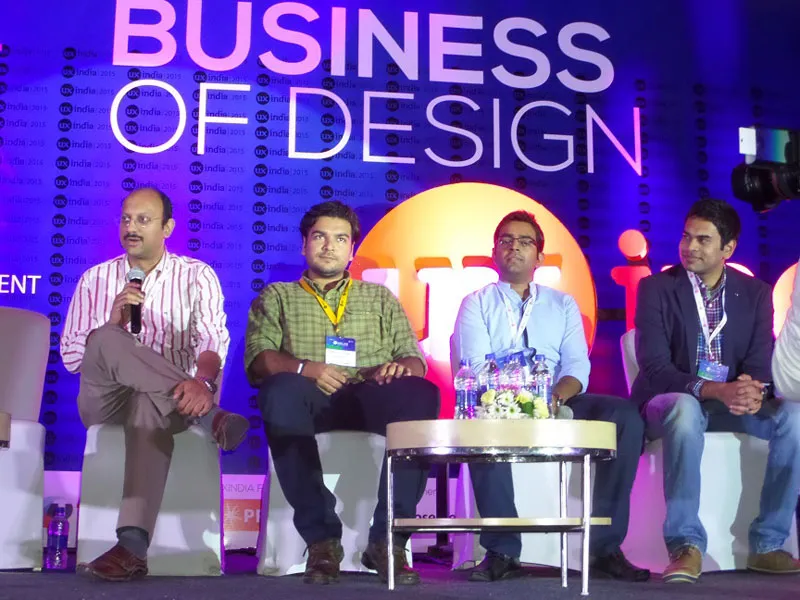
Designers and entrepreneurs should not be afraid to ask questions, and should focus on co-creating the future rather than trying to predict it, Padaki said, citing the work of experts such as Prof. Saras Saraswathy from the University of Virginia (see my interview). Padaki has developed a string of parameters for investors to assess business design and entrepreneur strength, such as passion, purpose, perseverance, problem focus, performance, and profit.
The UX India conference, now in its 10th year, also launched a Design Clinic for 10 startups to get direct inputs and advice from a panel of distinguished UX experts. The shortlisted companies this year included FortunePay, ShieldSquare, CanvasFlip, EventsHigh, YourDost, VaultEdge, Frogo, GiftXoXo, Voiro and eKinCare.
We look forward to see how these startups perform over the coming year – and to next year’s edition of the UX India conference!


